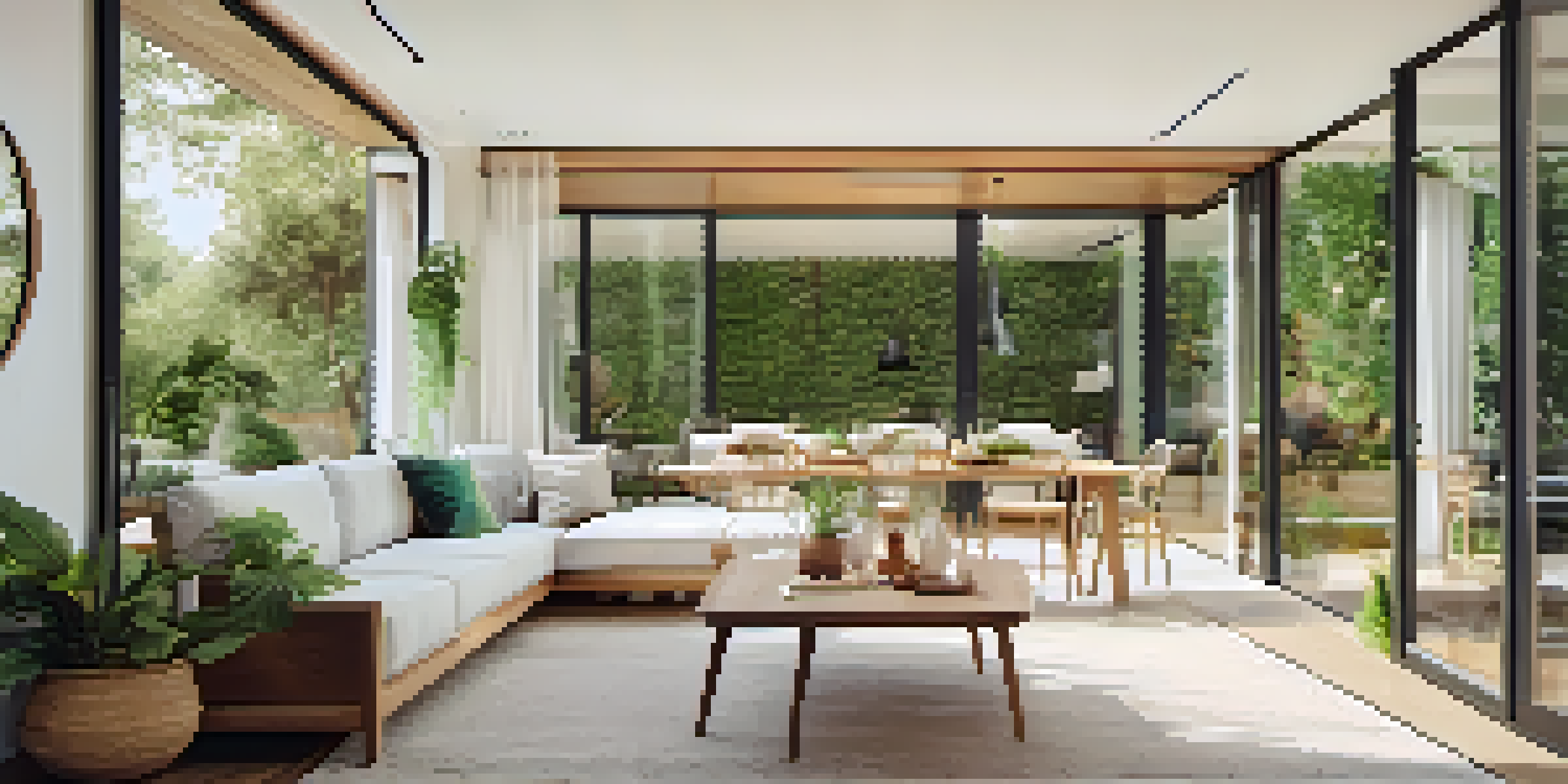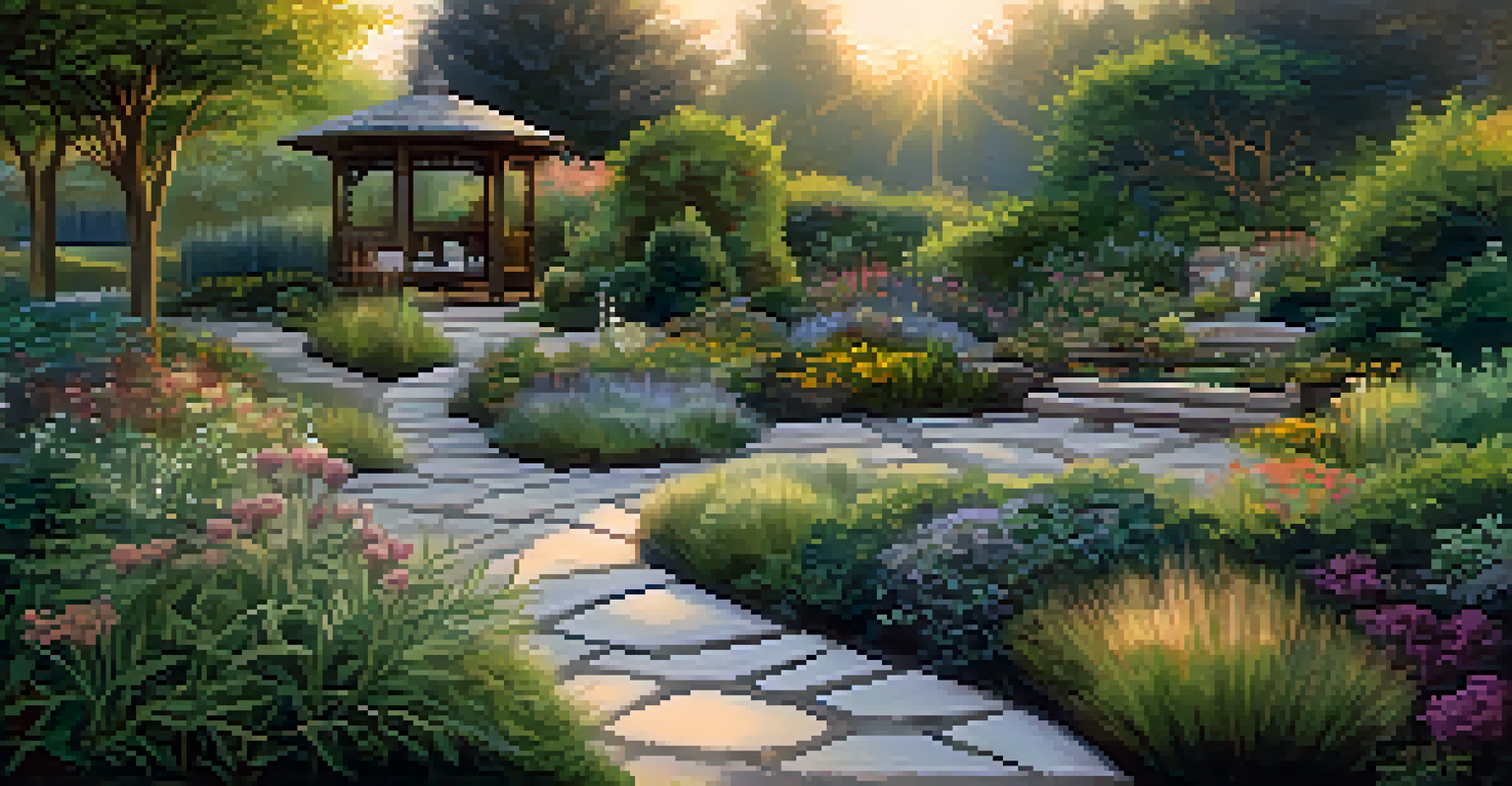Integrating Indoor and Outdoor Spaces with Open Layouts

Understanding Open Layouts: The Basics Explained
Open layouts are all about creating a sense of flow between spaces. This design style removes barriers like walls, allowing for a more fluid transition between different areas of a home. For instance, your kitchen can seamlessly connect to your living room, making it easier to interact with family and guests.
Nature is not a place to visit. It is home.
This style is particularly effective in integrating indoor and outdoor spaces. By using large windows or sliding doors, you can invite the outside in, blurring the lines between your home and your garden. Imagine cooking while enjoying views of your beautiful backyard, or hosting a gathering where everyone feels part of both worlds.
Moreover, open layouts can enhance natural light, which not only makes spaces feel larger but also contributes to a more inviting atmosphere. When designed thoughtfully, these spaces can be both functional and aesthetically pleasing, promoting a lifestyle that embraces both indoor comfort and outdoor beauty.
The Benefits of Integrating Indoor and Outdoor Spaces
Integrating indoor and outdoor spaces offers numerous advantages, starting with increased living area. When you open your home to the outdoors, you gain extra space for entertaining, relaxation, or even gardening. Picture hosting a summer barbecue that flows from your kitchen to your patio, creating a lively atmosphere.

Additionally, this integration fosters a deeper connection with nature. Access to outdoor views and fresh air can significantly boost your mood and overall well-being. Studies have shown that spending time in nature can reduce stress and enhance creativity, making your home a sanctuary for both relaxation and inspiration.
Open Layouts Enhance Space Flow
Open layouts eliminate barriers between rooms, creating a seamless flow that connects indoor and outdoor spaces.
Moreover, having easy access to outdoor spaces encourages a more active lifestyle. Whether it's a morning jog in your garden or weekend yoga on your deck, the possibilities are endless. This connection can transform how you experience your home, making it a place of joy and vitality.
Design Elements That Enhance Indoor-Outdoor Flow
To create a seamless transition between indoor and outdoor spaces, consider design elements like wide doorways and expansive windows. These features allow for uninterrupted views and easy access, making it simple to enjoy both environments. Imagine a beautiful glass door that opens up to a sun-drenched patio, inviting the outside in.
The best way to predict the future is to create it.
Incorporating similar materials and colors throughout your indoor and outdoor spaces also helps create a cohesive look. For example, using the same flooring material can visually connect both areas, making them feel like one continuous space. This approach can be particularly striking when you choose natural materials, such as wood or stone, that harmonize with the surrounding landscape.
Lastly, think about your furniture and decor. Choosing weather-resistant pieces for outdoor spaces that mirror indoor styles can create a unified aesthetic. A comfortable lounge chair outside that matches your living room sofa can encourage you to enjoy both spaces equally.
Creating Functional Outdoor Spaces for Relaxation
Functionality is key when designing outdoor spaces. Consider what activities you'd like to enjoy outside, whether it's dining, lounging, or gardening. Adding a well-placed dining table and chairs can transform your patio into an inviting space for family meals or evening cocktails with friends.
Incorporating elements like fire pits or outdoor kitchens can enhance functionality, making your outdoor area perfect for entertaining. Imagine gathering around a cozy fire on a chilly night, roasting marshmallows and sharing stories. These additions not only extend your living space but also create memorable experiences.
Integrating Nature Boosts Well-Being
Access to outdoor views and fresh air fosters a deeper connection with nature, enhancing mood and overall well-being.
Don't forget about shade and comfort. Installing awnings, pergolas, or outdoor umbrellas can provide relief from the sun, making your outdoor area usable year-round. With the right setup, your outdoor space can become an extension of your home, inviting you to unwind and connect with nature.
Incorporating Nature: The Role of Landscaping
Landscaping plays a crucial role in integrating indoor and outdoor spaces. Thoughtful plant selection can enhance views from inside while creating a serene outdoor environment. For instance, strategically placed shrubs and flowers can provide privacy while adding vibrant colors to your landscape.
Consider using native plants that thrive in your local climate, requiring less maintenance and water. This not only supports local wildlife but also fosters a sustainable approach to gardening. Imagine attracting butterflies and birds to your yard, creating a lively backdrop for your indoor spaces.
Moreover, pathways and outdoor lighting can guide the eye and enhance the overall experience. A winding path leading from your home to your garden invites exploration, while soft lighting creates a warm ambiance for evening gatherings. These elements make the transition between indoor and outdoor spaces feel effortless and inviting.
Choosing the Right Furniture for Seamless Integration
Selecting the right furniture is essential for creating a harmonious indoor-outdoor flow. Look for pieces that are both stylish and durable, able to withstand the elements while complementing your indoor decor. For example, a chic outdoor sofa that matches your living room's aesthetic can create a cohesive look.
Consider multi-functional furniture as well, such as storage benches or convertible tables. These pieces not only save space but also enhance usability, allowing you to adapt your outdoor area for different occasions. Imagine a table that can transform from a coffee table to a dining table for larger gatherings, making your space versatile and functional.
Sustainable Design Enhances Homes
Using eco-friendly materials and technologies in indoor-outdoor integration promotes sustainability while beautifying your space.
Finally, don't forget about comfort. Cushions and throws can make outdoor spaces just as cozy as indoor ones. By adding these personal touches, you invite relaxation and enjoyment, making your outdoor area a true extension of your lifestyle.
Sustainability in Indoor-Outdoor Integration
Sustainability is increasingly important in design, and integrating indoor and outdoor spaces offers unique opportunities to embrace eco-friendly practices. Start by using sustainable materials for your construction and furnishings, such as reclaimed wood or recycled metal. These choices not only reduce waste but also create a unique look for your home.
Incorporating energy-efficient windows and doors can help maintain comfortable indoor temperatures while reducing energy costs. Large, well-insulated openings can maximize natural light and ventilation, minimizing your reliance on artificial lighting and heating. Imagine enjoying sunlight streaming in without worrying about high energy bills!

Lastly, consider incorporating green technologies like rainwater harvesting systems or solar panels. These features can enhance your outdoor spaces while promoting sustainability. By making conscious choices, you can create a beautiful home that respects the environment and enhances your connection to nature.